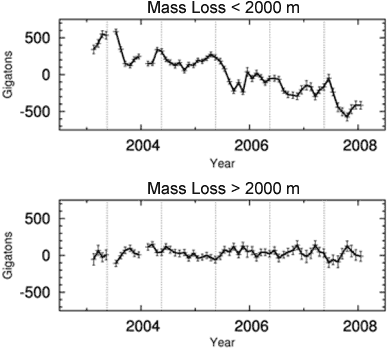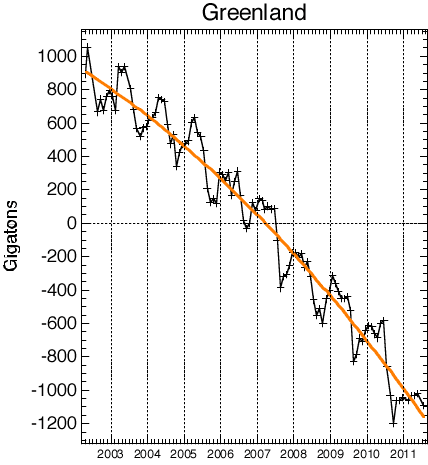 Arguments
Arguments
 Software
Software
 Resources
Comments
Resources
Comments
 The Consensus Project
The Consensus Project
 Translations
Translations
 About
Support
About
Support


Latest Posts
- Skeptical Science New Research for Week #49 2025
- Climate Adam & Dr Gilbz - Paris Climate Agreement At 10: Did It Do Anything?
- Fact brief - Does the recent slowdown in Arctic sea-ice extent loss disprove human-caused warming?
- Why the chemtrail conspiracy theory lingers and grows – and why Tucker Carlson is talking about it
- 2025 SkS Weekly Climate Change & Global Warming News Roundup #48
- Skeptical Science New Research for Week #48 2025
- Consensus machines
- Just have a Think - How an African energy revolution could save ALL of us.
- A girl’s grades drop every summer. There’s an alarming explanation.
- 2025 SkS Weekly Climate Change & Global Warming News Roundup #47
- Fact brief - Are changes in solar activity causing climate change?
- Skeptical Science New Research for Week #47 2025
- Exploring newly released estimates of current policy warming
- Climate Adam - Why the Climate Crisis is a Health Crisis
- Super pollutants are trendy, but we should be careful how we use them
- 2025 SkS Weekly Climate Change & Global Warming News Roundup #46
- Skeptical Science New Research for Week #46 2025
- On the Gates climate memo
- Climate Adam - Climate Scientist responds to Bill Gates
- Five ways Joe Rogan misleads listeners about climate change
- 2025 SkS Weekly Climate Change & Global Warming News Roundup #45
- Skeptical Science New Research for Week #45 2025
- Debunking Joe Rogan, Dick Lindzen, and Will Happer
- Fact brief - Does cold weather disprove human-caused climate change
- Climate change strengthened Hurricane Melissa, making the storm’s winds stronger and the damage worse.
- 2025 SkS Weekly Climate Change & Global Warming News Roundup #44
- Skeptical Science New Research for Week #43 2025
- Climate Adam - Can Solar Halt the Desert?
- Fact brief - Is there empirical evidence for human-caused global warming?
- A “controversial” methane metric?
Archived Rebuttal
This is the archived Intermediate rebuttal to the climate myth "Greenland is gaining ice". Click here to view the latest rebuttal.
What the science says...
|
While the Greenland interior is in mass balance, the coastlines are losing ice. Overall Greenland is losing ice mass at an accelerating rate. From 2002 to 2009, the rate of ice mass loss doubled. |
Global warming affects Greenland in two ways. Warming temperatures cause the ice sheets to thin and lose ice mass around the edges. On the other hand, warmer temperatures also cause more snow to fall in Greenland's interior. Which has the greater effect? Is Greenland losing or gaining ice?
Over the years, a variety of techniques have been employed to measure Greenland's mass balance. Snow pits are dug to measure snowfall. Stations are set up to measure incoming and reflected sunlight. Aircraft use laser altimetry to measure changes in surface elevation. Melt areas are determined by satellites reflecting microwaves off the surface. Satellite radar interferometry measure the horizontal movements of Greenland's glaciers. In 2003, NASA launched the Ice, Cloud, and Land Elevation Satellite (ICESat), using laser altimetry to more accurately measure changes in the Earth’s surface elevation.
All this data has been pieced together to form a continuous picture of Greenland's mass balance from 1958 to 2007 (Rignot et al. 2008). There is robust agreement between the various independent measurements and a clear long term trend is apparent. In the 1960s, the ice sheet was losing 100 gigatonnes of ice per year. In the 1970s-1980s, the rate of ice loss slowed to near mass balance. In 1996, the rate of ice mass loss had increased to 97 gigatonnes per year. In 2007, the ice mass loss increased rapidly to 267 gigatonnes per year. To put this into perspective, a gigatonne is one billion metric tonnes, the mass of a cube of water that is 1 kilometre wide, tall, and deep.
So we see a long term trend of accelerating ice mass loss since the 1970s. This is confirmed by the Gravity Recovery and Climate Experiment (GRACE) satellite, measuring shifts in Earth’s gravity field. The GRACE data offers a complete picture of the entire ice sheet, allowing comparisons of mass changes in coastal regions (eg - elevations below 2000 metres) with the Greenland interior (above 2000 metres). Over the period 2003 to 2008, the coastal regions were observed to be losing ice mass while the interior was in approximate mass balance. The overall result is that the Greenland ice sheet is losing ice mass (Wouters et al. 2008).

Figure 1. Mass loss from the Greenland ice sheet for coastal regions below 2000 metres (top) and interior regions above 2000 metres (bottom). (Wouters et al. 2008)
The latest GRACE data reveals more about the long term trend. Figure 2 shows the ice mass changes in Greenland from April 2002 to February 2010 (originally published in Velicogna 2009 with more recent data from John Wahr). The black line/crosses show monthly values of ice mass. The orange line is the best fitting quadratic trend. The best fitting trend finds that Greenland ice loss is accelerating at a rate of 30 Gigatonnes/yr2. Greenland's mass loss doubled over the 8 year period.

Figure 1: Greenland ice mass anomaly - deviation from the average ice mass over the 2002 to 2010 period. Black line shows monthly values. Orange line shows long-term trend (John Wahr).
The long term trend since the 1970s is accelerating ice mass loss. This is confirmed by gravity satellite measurements over the past 9 years which find that the rate of ice mass loss has doubled over the last 9 years. Just as with Antarctica, Greenland's ice sheet contribution to rising sea levels is continuously and rapidly growing.
Intermediate rebuttal written by John Cook
Update July 2015:
Here is a related lecture-video from Denial101x - Making Sense of Climate Science Denial
Additional videos from the MOOC
Expert interview with Jonathan Bamber
Expert interview with Eric Rignot
Expert interview with Isabella Velicogna
Updated on 2015-07-06 by pattimer.
THE ESCALATOR

(free to republish)
























































